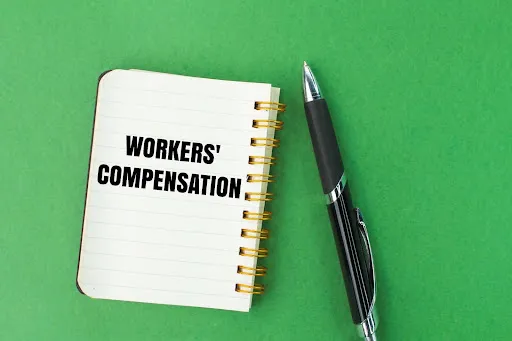
How Workers Comp Works: Understanding the Process
What Is Workers' Compensation? Understanding the Basics
Workers’ compensation safeguards workers when they face job-related injuries or illnesses. It offers financial support and medical care to ease the challenges of recovery. At its core, the system bridges the gap between employers and employees during workplace accidents.
Defining Workers' Compensation and Its Purpose
Workers’ compensation is an insurance program covering workplace injuries. It ensures that injured employees receive medical care and wage replacement. The system removes the burden of proving employer negligence in court. It also protects businesses from direct lawsuits by employees. This mutual protection underscores its importance to the workforce.
Who Is Eligible for Workers' Compensation?
Eligibility for workers’ compensation depends on several key factors. Most employees, including full-time and part-time workers, are covered. Under standard laws, independent contractors are often excluded. Each state has specific guidelines for determining eligibility. Understanding these rules is essential for both workers and employers.
How Workers Comp Works for Injured Employees
Injured employees must follow specific steps to access workers’ compensation benefits. The process begins with reporting the injury and filing a claim promptly, which ensures employees receive the medical attention and financial support they need.
Reporting an Injury to Your Employer
Timely injury reporting is critical for workers’ compensation eligibility. Employees should inform their employer as soon as an accident occurs. This report should include details like the injury’s time, place, and nature. Employers often have a set timeframe for accepting these reports. Missing this window could jeopardize the worker’s claim.
Filing a Workers' Compensation Claim
Filing a workers’ comp claim formalizes the process of seeking benefits. Employees need to complete the required forms and submit evidence of their injury. Employers or insurance providers may assist in initiating the claim. Workers should keep copies of all documentation for reference. This preparation simplifies future steps if disputes arise.
Medical Evaluations and Treatment
Medical care is a cornerstone of workers’ compensation. Injured workers must undergo evaluations by approved healthcare providers. These assessments determine the severity of injuries and the treatment that is needed. Workers should follow prescribed treatments to support their recovery. Compliance also demonstrates a commitment to returning to work when possible.
How Workers Comp Works in Providing Benefits
Workers’ comp benefits offer more than financial relief; they ensure workers can heal without undue stress. Each type of benefit addresses specific challenges that injured employees face. Recognizing these categories helps workers maximize their claims.
Types of Benefits Available Through Workers' Compensation
Workers’ compensation benefits fall into distinct categories. These include medical care, temporary disability, permanent disability, and death benefits. Medical benefits cover doctor visits, surgeries, and prescriptions. Disability payments replace lost wages during recovery or permanent impairment. Death benefits support families of workers who suffer fatal accidents.
Duration and Limits of Workers' Compensation Benefits
Workers’ comp benefits have defined durations based on the injury. Temporary disability benefits usually last until workers recover fully. Permanent disability payments may continue for years but with capped amounts. Each state imposes unique limits on duration and payout. Workers should confirm these details with their employer or insurer.

How Workers Comp Works When Disputes Arise
Disputes can occur at any stage of a workers’ compensation claim. Common disagreements involve denied claims, benefit amounts, or treatment coverage. Understanding the appeals process helps workers challenge these decisions effectively.
Common Reasons for Denied Claims
Denied claims are often caused by missed deadlines or incomplete documentation. Insurers may dispute the injury’s work-related nature or severity. Workers should review denial notices for the specific reasons provided. In many cases, resolving these issues requires additional evidence or clarification. Being proactive can help reverse a denial.
Appeals Process for Workers' Compensation Claims
The appeals process allows workers to contest unfair claim denials. It starts with a formal request to review the insurer’s decision. Workers may need to attend hearings or provide more evidence. Legal representation can improve outcomes in complex cases. Staying organized is key to a successful appeal.
How Workers Comp Works for Employers
Employers play a crucial role in the workers’ compensation process. Their responsibilities include providing coverage and facilitating claims. Understanding these duties ensures compliance and smooth resolution of workplace injuries.
Employer Responsibilities in Workers' Compensation
Employers must maintain active workers’ comp insurance for eligible employees, report workplace injuries promptly to insurers, cooperate with investigations to verify claims and accommodate workers returning with limitations. Fulfilling these responsibilities prevents legal and financial penalties.
Employer Rights and Protections Under Workers' Comp
Workers’ comp laws shield employers from direct employee lawsuits. In exchange, they must provide no-fault benefits for injuries. Employers can challenge claims they believe are fraudulent or exaggerated. Insurers often assist with these investigations. This balance of rights ensures fairness in the system.
The Benefits of Understanding How Workers Comp Works
A clear understanding of workers’ compensation helps prevent misunderstandings. Knowing one’s rights and responsibilities benefits both employees and employers. This awareness promotes faster recovery and resolution of claims.
Navigating the Process for Better Outcomes
Navigating workers’ comp starts with clear communication. Workers should report injuries, follow treatment plans, and track paperwork. Employers can help by staying informed about legal requirements. This collaboration ensures smoother resolutions for all parties. Knowledge strengthens confidence in using the system.
Building Awareness to Protect Rights and Responsibilities
Awareness reduces conflicts and ensures all parties act responsibly. Workers should learn about their state’s compensation rules before issues arise. Employers benefit from proactive measures like training and policy updates. This understanding creates a safer and more supportive workplace. Preparation fosters trust and transparency during challenges.
How Workers Comp Works Across States and Legal Frameworks
Workers’ compensation laws are not uniform across the United States. Each state has regulations that determine eligibility, benefits, and claim procedures. Federal employees are subject to distinct rules under federal workers’ comp programs. Checking your state’s specific laws ensures accurate expectations and proper compliance.
State Laws and How Workers Comp Works
State laws significantly shape workers’ compensation processes and outcomes. For instance, some states allow employees to choose their doctor, while others assign specific providers. The types of injuries covered and benefit durations also vary widely. Employers must adhere to state guidelines for providing coverage. Workers should familiarize themselves with these rules to avoid claim issues.
Federal Laws and Workers Comp Protections
Federal laws govern workers’ compensation for certain groups, such as federal employees. The Federal Employees’ Compensation Act (FECA) outlines specific benefits for workplace injuries. Unlike state systems, FECA applies uniformly across all federal workers. Employees of private businesses in multiple states must adhere to local regulations. Understanding these distinctions ensures compliance for workers and employers alike.
Why State-Specific Knowledge of Workers Comp Matters
Ignorance of state-specific rules can lead to costly mistakes. Filing deadlines, eligibility requirements, and benefit calculations differ between states. Reviewing official state resources or consulting legal professionals can prevent delays. Employers should regularly update their policies to align with changing laws. Proactive knowledge ensures smoother claims and fewer disputes.
Financial Insights on How Workers Comp Works
The financial dynamics of workers’ compensation impact both employees and employers. Insurance premiums, claim costs, and benefit calculations all play key roles. Understanding these aspects helps businesses manage expenses while ensuring fair worker compensation. It also empowers workers to gauge the adequacy of their benefits.
Workers Comp Insurance Premiums for Employers
Employers pay insurance premiums to cover workers’ compensation claims. Factors like industry risk and claim history influence premium rates. High-risk industries, such as construction, typically face higher premiums. Employers with frequent claims may experience increased rates over time. Managing safety protocols helps businesses reduce premiums and foster safer workplaces.

Claim Costs and Business Impacts
Workers’ compensation claims can lead to significant expenses for employers. Costs include medical treatments, wage replacement, and legal fees for disputed cases. These expenses also affect the employer’s insurance premiums over time. Effective injury prevention and claim management help control these financial impacts. A proactive approach benefits both workers and the organization.
Benefit Calculations and Workers' Comp Payments
Workers’ comp payments are calculated based on several factors. Temporary disability benefits typically replace a percentage of the worker’s lost wages. Permanent disability payments are determined by injury severity and earning capacity. States often impose caps on benefits to balance fairness and affordability. Understanding these calculations helps workers assess the adequacy of their compensation.
